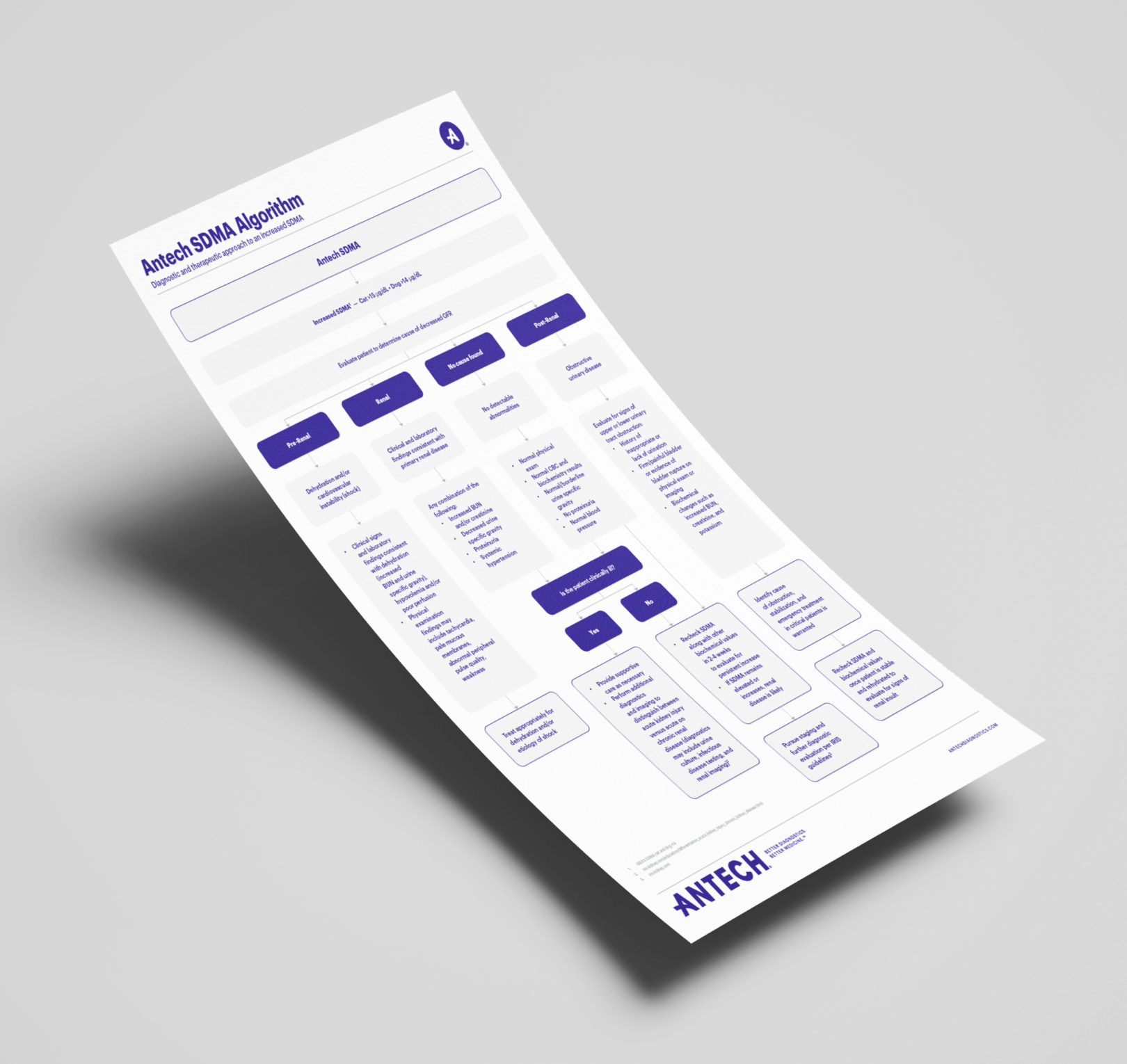SDMA

SDMA — The Standard for Kidney Function Assessment
SDMA is an earlier biomarker of loss of kidney function, increasing when there is an average 40% loss. Creatinine, however, does not increase until there is a 75% or greater decrease in kidney function. Furthermore, SDMA is less affected by extra-renal factors, such as dehydration or loss of lean muscle mass, making it a more reliable and sensitive indicator for loss of kidney function than creatinine.
SDMA can be increased in acute kidney injury (AKI) and with chronic kidney disease (CKD) in both dogs and cats. The importance of measuring SDMA is highlighted by its inclusion in the International Renal Interest Society (IRIS) guidelines (iris-kidney.com) for diagnosing, staging, and monitoring chronic kidney disease.

SDMA diagnostic and treatment algorithm
Antech SDMA is a renal biomarker for early diagnosis, staging, and monitoring of chronic kidney disease (CKD). SDMA complements RenalTech, which can predict CKD onset two years before disease occurs. Together, SDMA and RenalTech give veterinarians the first complete solution for feline CKD prediction, early diagnosis, monitoring, and staging, ensuring they can support the best possible outcome for cats.
What is SDMA?
Symmetric dimethylarginine (SDMA) is a methylated form of the amino acid arginine. It is freely filtered by the kidneys and accurately correlates with glomerular filtration rate (GFR), the gold standard for assessing kidney function.

Search our extensive list of tests.

Download Resources
Antech SDMA diagnostic and treatment algorithm
Antech SDMA product detailer

New Customers & General Inquiries
